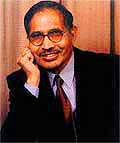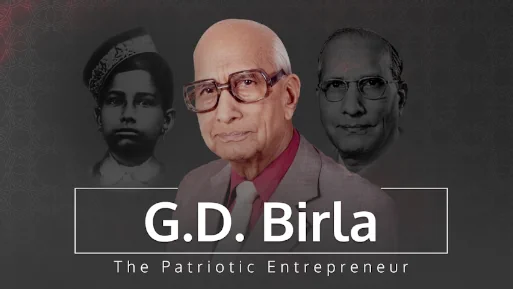Running a tight financial ship
01 January, 2004 | Big Barons
ShareBig Barons
The Aditya Birla group's Hindalco Industries Ltd. is one of India's financially best-run companies. CFO R.K. Kasliwal, in this exclusive interview with Business Barons, outlines the reasons for the company's outstanding financial success. Excerpts:
In dipstick surveys of India's best financially-managed companies, Hindalco has emerged consistently in the top three. To what do you attribute Hindalco's outstanding reputation for financial management?
 R.K. Kasliwal: Hindalco's financial management has been guided by its vision to be a premiumnon-ferrous metals company through market leadership, global cost competitiveness and value-adding growth. The commodity business requires companies to maximise cash generation in order to deal with the risk of cyclical ups and downs. Like all successful commodity companies, Hindalco also believes in carrying large reserves and free cash flows.
R.K. Kasliwal: Hindalco's financial management has been guided by its vision to be a premiumnon-ferrous metals company through market leadership, global cost competitiveness and value-adding growth. The commodity business requires companies to maximise cash generation in order to deal with the risk of cyclical ups and downs. Like all successful commodity companies, Hindalco also believes in carrying large reserves and free cash flows.
In the above context, Hindalco has adopted the following strategy for prudent financial management:
:: Ensuring investments which produce stable and predictable cash flows with significant positive NPVs.
::Adopting conservative financial policies by financing growth plans through internal accruals, thus keeping the company significantly under-leveraged with low debt-equity ratio and a healthy interest cover.::Maintaining AAA status and take advantage of opportunities in capital and debt markets to consistently reduce the costs of capital.
::Effective working capital management with an eye on reducing the cycle time.
::Proactively managing financial risks.
::Deploying a robust monitoring and MIS system.
In tune with the above strategies, our investments have mainly been in brown-field and incremental expansions, modernisation and cost reduction — which have paid off well and have been well-timed. We have also made acquisitions of similar businesses to have advantages in the marketplace.
As a result, we have been able to use our capital very effectively in the past which is reflected in a high return on capital employed which has averaged around 20 per cent over the past five years. Healthy cash flows as a result of high EBITDA margin has resulted in strong liquidity and sizeable cash surplus to the company. Pending utilisation for business expansion and growth, these liquid surpluses are gainfully deployed in a portfolio of varying maturities. At the same time, we have also locked in highly competitive pricing by taking advantage of opportunities in the capital/debt markets.
In this way, our financial policies have imparted the company a long-term stability necessary for implementing the strategy of fuelling growth and to withstand the sectoral cyclicality. These policies have been supplemented by a robust monitoring and MIS system which keeps a close tab on operating efficiencies and cash flows. The financial budgeting and controlling set-up of the organisation is represented by a unique management information system called parta, which is time tested and has evolved over a long period. The system lays down revenue, production and cost norms for each process at the best achievable level in ideal conditions. While budgeting these stretched targets nothing is provided for avoidables and the benchmarks are periodically u;pdated to incorporate the best achieved till date and those achieved by peer companies the world over. The system has a specific feature of converting every variance into monetary terms for the ease of analysis and control. The reporting is done for exceptional deviations and details.
We are proud of our strong and proven financial expertise. In tune with the changing times, and with a perennial eye on value creation, we have adopted Value Based Management and use tools like CVA, a variant of EVA, to evaluate proposals, monitor performance and for decision-making.
Given the increasing importance of corporate governance, what are the important functions of a Chief Financial Officer (CFO), in a blue chip corporate such as Hindalco?
Kasliwal: It is true that in the past 3-4 years, corporate governance has assumed increased importance in the overall scheme of things. The spate of accounting scandals and inappropriate disclosure that rocked the global corporate fraternity is still fresh. In the wake of this, the focus has definitely shifted to corporate governance. Not only this, the operating environment has also changed considerably from that about five years ago. All these have led to the transformation of the role of the CFO in a corporation.
Earlier, the role of the CFO was restricted to benchmarking of best practices and metrics that deal with transaction processing, controls, budgeting and routine reporting activities. However, with the opening up of the Indian economy and consequent entry of institutional investors into the Indian capital markets, the need for efficient management of external stakeholders emerged in a significant manner. Consequent to this emerging need, the face of the CFO has changed dramatically over the years, but more notably in the last few years.
It has transformed from that of Command and Control to Enterprise-Wide Decision Support, with a significant role in the value creation process. Benefiting from consistent efforts, the CFO's role has clearly emerged as a decision support source for the CEO in shaping the corporate strategy while also making vital connections to operational reality and giving direction of growth for the organisation. While doing so, we have also felt the need for an effective value communication to ensure that the value so c;reated in the organisation is reflected fully in the enterprise value, at all times, which not only benefits stakeholders, but also results in lower cost of capital for the organisation.
Attuned with the changing operational realities, a significant amount of time is devoted to compliance with company law and corporate governance requirements. Not only this, effective treasury management, corporate tax planning and risk management are also the areas of focus. In sum, the role of the CFO has transformed from that of transaction processing to that of the value creation and communication.
Please tell us in brief about the financial performance of Hindalco in FY 03. How has the company fare on important parameters?
Kasliwal: In a year characterised by a dim economic environment, overshadowed by geo-political issues and a significant lowering of consumer spends, Hindalco managed to sustain its performance in FY 03. Besides, FY 03 was a landmark year strategically, characterised by moves aimed at sustaining the growth momentum and delivering superior value for stakeholders. These include the acquisition of a high growth copper business, a copper mine in Australia, and the balance shareholding in Indal. The commissioning of the 10th and 11th pot lines as part of the brownfield expansion in aluminium was of significance as well.
The company attained revenues of Rs. 49.7 billion. Operating profits stood at Rs. 12.1 billion and net profit at an impressive Rs. 5.8 billion. Of this, the aluminium business accounted for 48 per cent of the revenues and 66 per cent of profits, while the balance accrued from our copper business.
Our performance, however, was marked by some adverse developments. A grid failure and the consequent interruptions disrupted our aluminium smelter's operations, impairing its overall performance. A spurt in the cost of coal and captive power generation was a drag as well. Markets too did not favour growth, as there was a marked mismatch between the demand and supply situation. The performance of the copper business was also impacted by a de-growth in the domestic market, lower TC/RC and a rising rupee. Besides, we also booked an extraordinary loss of Rs. 1,633 million on account of loss on sale of shares of MRPL and expenses for amalgamation of copper business.
That we could move forward, despite the tremendous odds against which we had to operate, is a reflection of our resilience power. Significantly, the ability to continuously sweat our assets, hone our operating efficiencies and pare costs — have been the critical enablers, partly responsible for our company's progress.
How have turnover and PAT grown in the last three years and what is your guidance for FY 04?
Kasliwal: The performance of the last three years is not strictly comparable, as the figures of FY 03 include the performance of the merged copper business. But to put things into perspective, in the last three years turnover has increased from Rs. 22,754 million to Rs. 49,755 million. Profit before extraordinaries has increased from Rs. 6,781 million to Rs. 7,455 million. However, it must be mentioned that this period was also marked by global economic recession with the commodity cycle going through its worst pact in many years. In the face of this, it is a commendable performance indeed.
Going ahead, our growth will be driven by the well-timed brownfield expansions in both aluminium and copper. We have recently completed a Rs. 18 billion brownfield expansion in aluminium which has increased our production capacity from 2,42,000 tpa to 3,42,000 tpa. Consequent to this, we expect our topline to increase by over 20 per cent in aluminium this year. Similarly, in copper, we are in the process of commissioning new facilities which shall enhance the smelter capacity from 1,50,000 tpa to 2,50,000 tpa. Not only will these addi-tional capacities enhance the output, but will also drive down our costs lower than existing levels. The benefits of these expansions will flow to us in FY 04 and FY 05.
Could you elaborate on crucial ratios of financial performance for Hindalco in FY 03, such as ROCE, RONW and NPM? Do you expect these to improve further in the current fiscal?
Kasliwal: In FY 03, the aluminium business of Hindalco reported a ROCE of 20.8 per cent and the copper business registered a ROCE of 17.1 per cent. The NPM for the company stood at 11.7 per cent with a RONW of 11.5 per cent.
As stated above, last year's performance was marked by some adverse developments which has largely been tackled. The global economy has been on a recovery path and demand for both aluminium and copper are improving. The increased supplies coming on stream from our well-timed brownfield expansions will drive volume growth and pare our costs further. However, lower TC/RC and rupee appreciation will impact the copper business' performance. As a result of all these, we are cautiously optimistic about the above ratios in the coming fiscal.
Hindalco is a cash-rich company. How do you optimise treasury management returns in the light of a falling interest regime?
Kasliwal: Hindalco has a proven track record of successfully managing its financial resources to support the overall policy and strategy of the company. We believe that the timely availability and optimum utilisation of financial resources go a long way in effective implementation of business strategies.
To attune its policies to the pace of change in the scenario of declining interest rates the company is moving towards higher gearing — through higher debts and share buyback — to deliver superior shareholder returns. Moreover, our liquid surpluses are gainfully deployed in a portfolio of varying maturities. The treasury decisions are focused more on risk minimisation than on maximising return and therefore, deployment of funds is guided more by security and liquidity, rather than by return.
We are also proactive in lowering our cost of borrowings by pre-paying high interest bearing loans and raising foreign currency denominated loans at low rates of interest, and moving from fixed rate borrowings to floating rate in a timely manner.
With Hindalco's stock price ruling at well over Rs. 1,250 investors have earned good returns over the past 12 months. With LME prices staying firm, do you see Hindalco continuing to be a top pick for institutional and retail investors?
Kasliwal: Following an underlying upturn in the aluminium and copper commodity cycle, our stock prices have seen a sharp re-rating in the last five months. In my view, there is more to it than meets the eye. The re-rating is also a reflection of our persistent efforts to affect value communication across the spectrum of the investing community. We have made aggressive efforts to present our growth story and convince the investors across the globe about our value enhancing strategic moves at diverse platforms. This enhanced exposure has also contributed in some measure to increasing investor interest in our scrips. Some large fund houses have taken an exposure in our shares.
During an upswing in the commodities cycle, the shares usually trade at close to replacement cost or at a slight premium. However, even after the recent share price rises, we trade at a large discount to replacement cost/NAV. Given our lower valuations, I feel that we provide higher potential upside.
We believe that gradually our scrip should be de-linked from the movements in LME prices to a large extent. This will happen due to various factors like backward integration in copper by acquiring mines in Australia, maintaining a large presence in value added products in aluminium along with our subsidiary Indal, increasing our capacities in both the businesses, and rising operating efficiencies. Even if LME prices remain stagnant, our earnings may improve on the back of the above reasons.
Hindalco is amongst the world's lowest cost aluminium products and manufacturers 50 per cent of India's copper. Will the amalgamation of the Aditya Birla group's copper business with Hindalco improve the company's already excellent margins in the future?
Kasliwal: The acquisition of the copper business has strengthened Hindalco's presence in the non-ferrous metals sector while providing financial strength and flexibility to take on global-sized opportunities. It has also balanced our risk profile and dampened earnings volatility. The acquisition is value accretive and it will add to incremental cash flows, earnings and ROCE. As margins in the copper business are not as high as those in aluminium, the overall margins of the company may come down. But with the ongoing low-cost expansions in copper, the ROCE will see an improvement from the copper business. Going ahead, we foresee an improvement in the margins of both aluminium and copper — and hence for the entire company — over that of the last year.
Hindalco has achieved world-class standards across its manufacturing operations and financial reporting and disclosures. Do you expect to tap overseas markets for bond or equity issues in the medium-term future?
Kasliwal: On the back of healthy cash flows and liquidity, in recent years we have funded all our growth plans, viz., organic (brownfield expansion) as well as inorganic (acquisition of Indal) through internal accruals. As of now, there are no plans to tap overseas or even domestic markets for capital. However, we are in the process of finalising our growth plans for the future and as and when an opportunity and need arises, we shall tap the capital markets (overseas or domestic) appropriately. At this point, I would also like to mention that we remain fully prepared for any eventuality and had adopted US GAAP accounts way back in FY 99-00.
CFOs worldwide are increasingly important parts of top management along with CEOs. Do you regard this broader, more responsive role for CFOs materialising in leading Indian companies as well?
Kasliwal: Yes, I believe that CFOs across leading Indian companies are now regarded as important parts of top management. This transformation has been complete and a new breed of CFOs who provide crucial decision-support to the CEO are already in place.






